When does a Perched Water Table matter?
plantcrazed101
8 years ago
Featured Answer
Sort by:Oldest
Comments (118)
tapla (mid-Michigan, USDA z5b-6a)
8 years agodale92539 Riverside Co SoCal
8 years agoRelated Discussions
Q. Re Perched Water Table Depth
Comments (5)Well duh! I should have known that....kind of guessed, but wasn't sure. I could see how the bigger particle size would allow more air space and break the water tension. Pot depth will only matter to the particular plant and how much root room it needs. What had me straining the gray matter on this is that another forum member and I have been playing with using composted pine bark and composted cotton burrs as rooting medium under mist. I believe from other posts that she has a timer and I do not. So far I haven't rotted a rose cutting, but I do think I probably need to sift out the "fines" for insurance. The saving factor for me is that I am using the 3/4 to 1 gallon per hour mist (fog) nozzles, and have them 2' above the cuttings and spraying upward so that I get even more drift. Al, One more question or opinion. Will making cuts up the sides of the pots do anything to break water tension? I made large holes in cottage cheese cartons and then took them to a band saw to cut from the drain hole up about 3 inches into the sides of the pot....See MorePerched water table and wicking to earth
Comments (9)Yeah ... I've never had to "top off" an actual raised bed (that is in contact with the ground). Containers get dumped every year or two and the contents added to the compost. I don't grow in containers much any more, though that could change next year. I'm quite limited in open space for a garden here. I'm thinking of building my own Veggie Trugs next spring. This is a large container and not really a "raised bed" because it has no soil contact. On the other hand, I use mulching materials that (eventually) add to the soil, and there is the compost going into the beds. The mulching encourages earthworms - my raised beds are typically bursting with earthworms. And they help by pulling material down into the soil, aerating and churning things up down there, and generally keep the soil light and fluffy. That doesn't work so well in actual containers though. I'm not sure how I'll treat the home-made veggie trugs yet. That's way too much potting mix to discard every year. I'll have to experiment and see....See MoreInternal heater - does my water heater temp matter?
Comments (13)Some washers with onboard water heating are time-limited in how long the wash period is held/extended while the heater operates. The intended target temp for some cycles may not be reached if the initial fill is not hot enough per the machine's engineered/design parameters. Designated Sanitary cycles typically have longer hold times but still may fall a little short of the target. I used a 2006 Whirlpool Duet HT for a couple months. The Whitest Whites cycle and Heavy cycle (on both warm and hot temp settings) utilized the heater but only on the highest soil level. I ran a few loads on both warm and hot with cold and warm-er and hot-ish fills to test the effect of heating, and found that the end-result wash temp fell further short of the expected "warm" or "hot" target with cooler initial fills. The Sanitary cycle had a much longer heating period and seemed to always reach the target if the initial fill was at least warm....See MoreQuestion about perched water table
Comments (10)Because the side of a pot, especially a pot made of porous material, is more or less continuous, it has a lot of potential for water molecules to adhere to the pot wall. Since there is more adhesion at the interface between the pot wall and particles vs the amount of adhesion between soil particles, you would expect a greater tendency for there to be a very thin film of water on the pot walls that is slightly higher than the PWT say 1/8" inside of the pot wall. Even soils that aren't capable of supporting a PWT can support this light film of water on pot walls. I suppose that, technically, you could call the water that remains as a microscopic film on soil particles and water that is retained in the immediate interface where soil particles contact each other perched water, but that's not water we're concerned with. We're concerned with the water that fills potential air spaces between particles because the size of the particles is small enough to increase adhesion to beyond the point where water will defy gravity and remain in the smaller soil pores instead of the pores draining. Example, if you have a container of a given volume filled with 100 1" diameter balls, the balls would have 314 sq in of surface area for water to stick to. If you had 1,000 1/10" balls, the surface area increases to 502 sq in, but 1,000 1/10" balls wouldn't come nearly as close to filling the container because of the reduction in pore size. I have to admit that I can't recall how to determine how many of the smaller balls it would take to fill the pot, but it would be considerably more than 1,000, which would significantly increase the surface area and in doing so increase o/a adhesive forces. You can thwart the sum of adhesion and cohesion causing perched water, and even force waters tendency to be retained at the interface where soils touch by employing Newton's First Law of Motion. Hold the pot with perched water and a drain hole over the sink and start moving it up and down. You'll find that each time you reverse directions from moving downward to moving upward, a good measure of perched water exits the drain hole. You'll soon learn that a gentle downward rhythm followed by a very sharp reversal upward will fling your plants against the ceiling, so unbridled enthusiasts should try this maneuver when they are about to fall asleep. Actually, the sharp reversal upward is the most effective way to force water from pots. It works great for small plants, and there's no mess involved unless you try it on the couch while watching your favorite TV show. Summed: The water you asked after isn't the 'bad' water. Water that remains in potential air spaces between soil particles is the water that limits root health and function. Al...See Moredale92539 Riverside Co SoCal
8 years agotapla (mid-Michigan, USDA z5b-6a)
8 years agodale92539 Riverside Co SoCal
8 years agotapla (mid-Michigan, USDA z5b-6a)
8 years agojodik_gw
8 years agojane__ny
8 years agodale92539 Riverside Co SoCal
8 years agolast modified: 8 years agojane__ny
8 years agotapla (mid-Michigan, USDA z5b-6a)
8 years agolast modified: 8 years agofred
8 years agolast modified: 8 years agojane__ny
8 years agotapla (mid-Michigan, USDA z5b-6a)
8 years agojane__ny
8 years agorooftopbklyn (zone 7a)
8 years agotapla (mid-Michigan, USDA z5b-6a)
8 years agojodik_gw
8 years agolgteacher
8 years agomyermike_1micha
8 years agolast modified: 8 years agojane__ny
8 years agotapla (mid-Michigan, USDA z5b-6a)
8 years agorooftopbklyn (zone 7a)
8 years agotapla (mid-Michigan, USDA z5b-6a)
8 years agonomen_nudum
8 years agolast modified: 8 years agojodik_gw
8 years agodale92539 Riverside Co SoCal
8 years agolast modified: 8 years agotapla (mid-Michigan, USDA z5b-6a)
8 years agodale92539 Riverside Co SoCal
8 years agolast modified: 8 years agohalocline
8 years agojane__ny
8 years agohalocline
8 years agofred
8 years agojane__ny
8 years agopeps_22
6 years agolast modified: 6 years agotapla (mid-Michigan, USDA z5b-6a)
6 years agopeps_22
6 years agotapla (mid-Michigan, USDA z5b-6a)
6 years agopeps_22
6 years agolast modified: 6 years agotapla (mid-Michigan, USDA z5b-6a)
6 years agopeps_22
6 years agotapla (mid-Michigan, USDA z5b-6a)
6 years agopeps_22
6 years agowestes Zone 9b California SF Bay
6 years agolast modified: 6 years agotapla (mid-Michigan, USDA z5b-6a)
6 years agoUser
6 years agomblan13
6 years agolast modified: 6 years agotapla (mid-Michigan, USDA z5b-6a)
6 years agopeps_22
6 years agopeps_22
6 years ago
Related Stories

MOST POPULARWhen Does a House Become a Home?
Getting settled can take more than arranging all your stuff. Discover how to make a real connection with where you live
Full Story
INSIDE HOUZZHow Much Does a Remodel Cost, and How Long Does It Take?
The 2016 Houzz & Home survey asked 120,000 Houzzers about their renovation projects. Here’s what they said
Full Story
CONTAINER GARDENSContainer Garden Basics: How and When to Water Potted Plants
Confused about soil moisture, the best time to water and what watering device to use? This guide can help
Full Story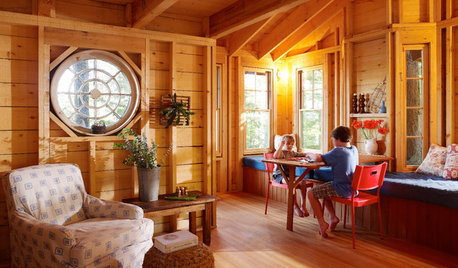
GUESTHOUSESA Hideaway for All Ages Perched Among the Trees in Maine
A modern Adirondack ‘treehouse’ is designed as a place for playing games, reading, sleeping over and enjoying forest views
Full Story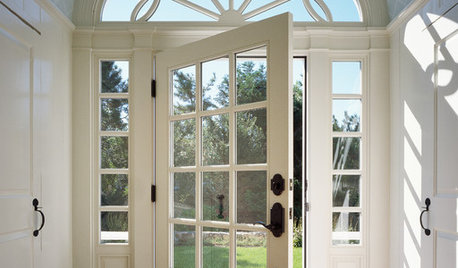
REMODELING GUIDESThe Good House: Little Design Details That Matter
Tailored trim, cool counters and a nice weighty door — such details add so much to how a home feels to the people inside
Full Story
DECORATING GUIDESHow to Choose an Awesome Area Rug No Matter What Your Space
High use, a low door, kids and pets running amok — whatever your area endures, this insight will help you find the right rug for it
Full Story
FEEL-GOOD HOMEDesigning for Pleasure: A Safe and Sound Perch
Canopy beds, low ceilings, high-back sofas: When it comes to comfort at home, we have something in common with our ancient ancestors
Full Story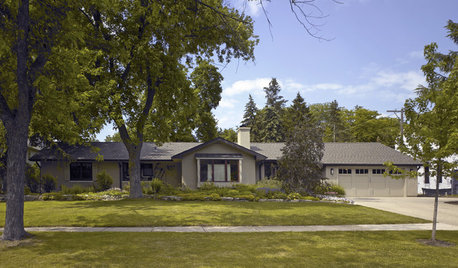
ARCHITECTUREThe Good House: Big Design Moves That Matter
Where to begin when designing a home? Think about your site, its context and the story you want it to tell
Full Story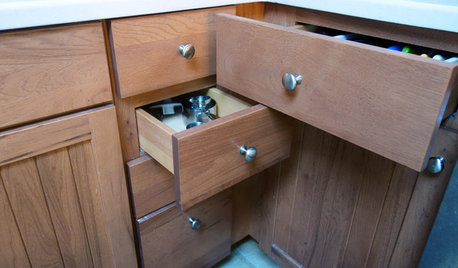
FUN HOUZZ10 Truly Irritating Things Your Partner Does in the Kitchen
Dirty dishes, food scraps in the sink — will the madness ever stop?
Full Story
REMODELING GUIDESBathroom Workbook: How Much Does a Bathroom Remodel Cost?
Learn what features to expect for $3,000 to $100,000-plus, to help you plan your bathroom remodel
Full Story



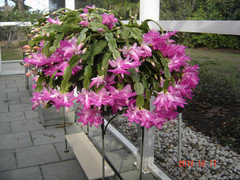
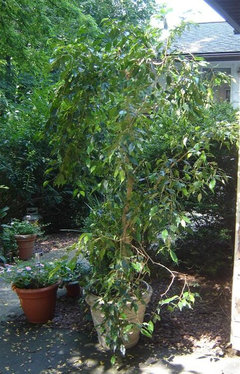

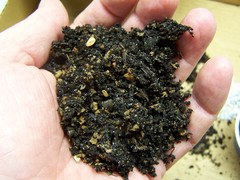

Loveplants2 8b Virginia Beach, Virginia